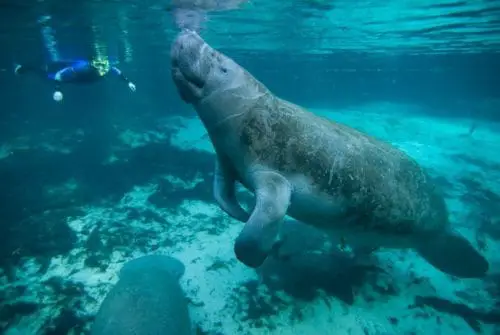
Open Water Swimming for Newbies – Crossing Your First Lake!
Adventure Is Calling

If you are someone who is getting ready to cross your first lake, then here’s what you should know before you go!

Meet the Author!
Khadija Phool: A passionate hiker, an enthusiast swimmer, and a big-time tea addict who loves to explore new places, take up challenging tasks, and write about her love of life and adventurous experiences. If not on a mountain, or in water, you will either find me playing table tennis, reading a book, or trying something completely new on a vacation.
Guide At a Glance
- Is this author an Adventurer?
- Is this Guide based on experience?
Your Next Quest
What you need to know before you go!
Are you into water activities, sports, or consider yourself a health & fitness freak? Do you like to call yourself an “adrenaline junkie” or a nature lover? Or are you crazy about underwater photography? If yes, then open water swimming is something you should try out at least once in your life!
And how come, me being a passionate hiker is talking about swimming all of sudden? Well, it’s a long story but to cut it short, I resorted to water activities the moment I learned I had to pause my hiking and trekking ambitions because of my knee injury. So, the good news is that no matter if you suffer from joint problems, swimming could be the best exercise as well as an amazing experience for you that can still keep you pursuing your thirst for a thrill!
I started with acquiring some basic swimming skills in swimming pools and then took this passion to explore far off lakes. And woof! The more I swam, the more I enjoyed it!
How do you go open water lake swimming?
Irrespective of the fact if you are an advanced swimmer or a newbie, you should know that open water swimming is a completely different experience than swimming in a pool. It involves swimming in spacious water places such as lakes, rivers, and oceans with no concrete walls to limit your movement. The best part is that you can go as deep as you want, depending upon your confidence, stamina, and of course recovery or treading skills. So without any restrictions, apart from stones (often found in lakes) or marine life, you can embrace the world’s delightful experience.
I, myself being an adventurous soul and a workaholic professional, found the best escape in warm water lakes. Open water swimming gave my life a breath of fresh air. To me, a lake is not only just a body of still water but more of an arena that offers my soul to connect with the depth of nature and unfold amazing facts of underwater life. It allows me to swim freely and just be my true self.
With swimming in warm waters, I discovered new ways to relax my muscles, lighten up my mood, and maintain my fitness at the same time! Apart from being a joyous activity, swimming in lakes has introduced me to a whole new community of people who have not only been wonderful swimming partners but also have taught me a lot of new tricks to play with water.
May you be an energetic teen or an enthusiastic grown-up adult who still craves adventure, or you want a fun exercise for shredding extra fats, then all you need is some good swimming skills and access to a nearby safe lake.
And what if you are a newcomer who wants to experience swimming in the open air where you can enjoy the sky and get some sunshine? Don’t worry, in this case, all you need to do is to find an open water swimming center with lifeguards and experienced swimming coaches.
Teach me your ways!
Well, if the sight of water excites you, then you are already one step ahead of many beginners who spend most of the initial time in overcoming the fear of sinking. Here are few tips that might help you make the best out of your warm water lake swimming experience:
- First of all, you have to build confidence and peace of mind. Just trust in yourself that you are going to swim in that damn lake! It’s just still water after all. 60% of a human body is composed of water too 😊 So, relax and get ready to be friends with open waters. I recommend you to go along with friends, with your swimming coach or anyone who can rescue you if it’s your first time.
- Keep your body flexible by doing some physical exercise on regular basis.
- Take a note of entrance and exit points of the lake, so you know your way out once you are in the water. You don’t want to get in or out around thick aquatic plants or deep mud, which can entrap and drown you!
- Start with hopping. It will help you adapt to the water environment quickly and you will gain confidence to do some real strokes.
- Start slow and do not rush since open waters are unknown with their large depths and aquatic life. Go easy on yourself until you are confident that you won’t be taken aback by the depth or any contact with the aquatic plants or underwater creatures.
- Safety is paramount when it comes to open water swimming. So, avoid interaction with the large stones that are often found in lakes. One wrong move or a minor slip can cause real damage to your body.
- Lastly, but most importantly: gather information about the lake that you are going to. Gather facts about wildlife or marine life, the temperature of the lake, the type of fungus/algae growing underwater, and the frequency of visits by other swimmers. Because the lakes that observe large groups of people have lower to zero chances of hosting dangerous animals such as crocodiles or snakes. Also, you should get information if the lake is home to minor water creatures and if coral reefs exist.
Need some inspiration?
Interested in open water swimming? Learn the “Ocean Walker” front crawl technique, perfected by Adam Walker, world-famous swimmer of the Oceans 7!
Still undecided?
PROS
- It relaxes your body muscles and improves your blood circulation.
- It increases your metabolism. The more you swim, the higher are the chances that you will burn more calories.
- It Improves your breathing by enhancing your lung capacity.
- It’s a great stress-relieving activity. At the same time, it helps you build strong focus.
CONS
- It can cause fungal infections such as mycosis as well as can get other skin allergies.
- Bacteria found in open waters can cause digestive disorders such as Gastroenteritis.
- You have to carry extra equipment for safety.
- Open water swimming is a seasonal activity, and you have to take a long break when winters arrive. This is the major drawback of having the craze of swimming in lakes.
Inspire
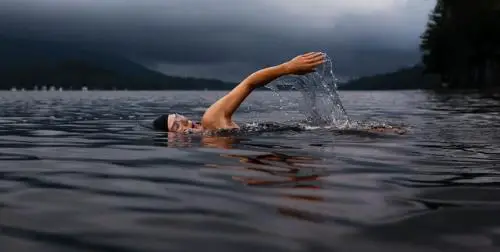

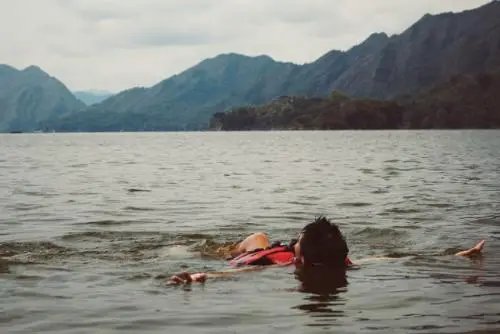

Where and When to Go?
Biome
Open water swimming can be enjoyed anywhere across the world where there are:
- Lakes
- Rivers
- Oceans
However, the experience of swimming in different water places is significantly different depending upon the factors mentioned below. It can turn out to be a galvanizing activity in the warm water of a lake, or it can come to you as an excruciating challenge in an ocean where you have to struggle yourself against the waves and winds.
Being a newcomer, you should start off with static water such as that of a lake, and preferably warm. Gather the following environmental factors about the lake that might fascinate you for your first ever open water swimming experience.
Width and Depth
Having knowledge of the width and depth of the lake will help you estimate your swimming skills when you are out in the water.
Air and Water Temperature
It is another major factor that you should be aware of when you go for your first ever swimming in a lake. Well, it usually depends on what part of the world the lake is located in. The temperature can be as low as -1 degrees C (31 F) in the lakes that are situated at higher altitudes such as Saif ul Malook Lake (Pakistan). Also, it can be as relaxing as 30 degrees C (86 F) such as that of Swaik Lake in Pakistan. So, if you want to enjoy as well as hone your swimming skills, then choose a place that offers a warm temperature as it will offer you relaxed swimming and low calories burn.
Season
Summer is the best time to go for open water swimming. As discussed above, warm water can help you relax your body and swim with ease. It also enables good visibility as sighting is important to locate the destination points.
I do not recommend swimming in cold water or swimming in the lakes of colder regions as the lower temperature water can cause hypothermia and can be a precursor of a heart attack. Also, swimming in the monsoon can be highly dangerous as the water level increases and the turbulence in water can make you lose your balance, especially if you are getting your feet wet with the lake.
There are many beautiful lakes suitable for swimming in the USA. You can choose the one to fulfill your open water swimming fantasy based on the factors shared above.
Regions
Wondering where you can go open water swimming?

The World!
You can go swimming anywhere! Anywhere you can find water three feet or deeper, you can swim!
Lakes and ponds are the safest locations to begin open water swimming. Ensure the water is clean and safe. Ensure there are no underwater currents or dangerous man-made structures. Bring a friend and a swim buoy.
Do not swim in lakes with thick underwater vegetation, underwater currents, high levels of algae or toxins, quick mud, dangerous animals or motorboats.
Essential Outdoor Skills
What outdoor and survival skills should I master before embarking?
To cherish the experience of swimming in a lake, you shall acquire the following skills in addition to basic swimming strokes.
Swimming Straight
Open water swimming can be daunting as there are no straight lines like swimming pools for your guidance. Straight swimming can help you find your way back to the surface without getting confused. Swimming in a straight line can be achieved by losing the body stiffness and using the left and right arms/legs muscles equally.
Sighting
Sighting is crucial to swimming in a lake or any other open water. It helps you navigate the direction of nearby buoys where you can rest or take a break.
Drafting
Drafting can prove very beneficial for beginners. It’s a technique where you swim along with another swimmer who swims slightly faster than you. This brilliant technique of swimming can save you about 30% energy by following the swimming lead in the water.
Numbers to remember
Safety & Risk
Is this adventure for you?
To your dismay, open water swimming is not all fun even if it is in stagnant water i.e, a lake. It comes with its risks, especially for beginners, such as drowning, getting lost, panic attacks, fungal infections, and skin & respiratory infections due to bacteria.
You should also stay away from man-made structures such as dams, docks and spillways, which can entrap unsuspecting swimmers.
Avoid lakes with motorboats and speedboats. Even with a swim buoy, you may not be seen, and you might get chopped up by a propeller blade.
- Drowning
- Getting lost
- Panic attacks
- Fungal infections
- Skin/respiratory infections
Further, you can get unprecedented injuries if you are not careful about foreign objects such as wood, heavy stones, pebbles, or unknown aquatic life that might exist in the depths of the lake.
DO'S
- Notify friends and family members before going to swim in open waters.
- Make sure you have the essential equipment before diving in.
- Analyze the open water area and plan out your route.
- Check the weather forecast.
- Make sure you have eaten well and won’t feel hungry for another 2 - 3 hours.
DONT'S!
- Do not go swimming in rainy, winter, and monsoon seasons.
- Do not swim alone. Having a swimming partner is a relief as well as a guarantee of creating fun memories!
- Do not drink water from the lake or you will be welcoming the micro-organisms such as bacteria to bring you diseases like Gastroenteritis.
- Do not act overconfident and do not take any risk in the moment of excitement.
- Do not cause panic and call for help immediately in the case of an emergency.
- Do not swim close to dams, spillways, bridge foundations, docks, or other manmade structures.
Wildlife
What animals can I expect to encounter?
In many lakes, you may face aquatic life such as fish, sea urchins, turtles, and other non-threatening animals. These minor water lives cannot bring any harm to you or your companions.
In tropical waters, pay more attention! You may encounter alligators or water snakes. Thankfully, most snakes in water are not venomous, but stay away from the alligators!
- Fish
- Muscles
- Turtles
- Water snakes


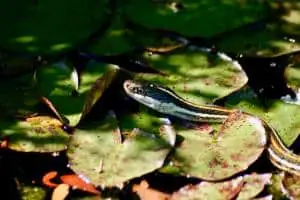
Fitness & Training
What is the recommended level of fitness?
For swimming in an open water venue, you should be in good health as it demands high endurance. People with flexible bodies and good bilateral breathing skills can swim well in vast lakes.
Training and preparation exercise regimen
Before you dive into a lake, you need to have proper training, as it determines your success rate and increases your chances of survival. You cannot practice in open water instantly. Instead, first, start training in a controlled enclosed environment under a professional’s supervision.
Here are some important training regimes you can follow:
- Free-floating: It is the key to relax your body and get rid of stiffness.
- Back floating: This is not just fun but also an essential floating position in case you need help. It is suggested that you roll yourself on your back on the water surface and wave for attention in case of emergencies.
- Front crawl stroke: It is the basic freestyle swimming skill that you should master to cross your first lake! 🙂
- Flutter kick: Coupled with front crawl, flutter kick is a paramount part of basic swimming! So, if you want to cross any length in a lake, you need to learn how to move your body across the water.
- Swim breathing: If you are going to swim in a lake that does not have any buoys or breakpoints, then you should train yourself for swim breathing. After all, you cannot hold your breath forever 😉
- Treading: Many learning swimmers are good at covering lengths in a pool, but for swimming in deeper waters such as lakes, you should know how to keep your head above the water surface when you are in a vertical position. You cannot just swim non-stop, flat on your body in vast waters.
Warm-up Exercises
To establish an effective rhythm of breathing, reduce muscle soreness, and lessen the risk of injury, it is recommended to do warm-up exercises before you dive into the water. Easy body stretches can also help you increase body flexibility.
Practice as much as you can to hone your swimming skills. Pat Riley has stated it right:
“Excellence is the gradual result of always striving to do better.”
Front Crawl

The front crawl is the most efficient stroke for long-distance swimming! Learn to breathe bilaterally so you don’t become hypoxic over long distances.
Flexibility
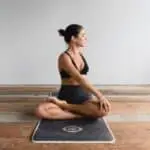
Maintain hip and shoulder flexibility so you don’t develop “swimmer’s shoulder” or “swimmer’s elbow.”
Plyometrics

Develop a strong core and back with pushups, situps, and other classic plyometric exercises without bulking up!
Gear Guide
What gear do I need for this trip?
Thankfully, open water lake swimming does not require a lot of gear. Just a swimsuit, goggles, swim buoy – and a level head!
Required Gear

- Swimming goggles
- Swimming cap
- Open water swimming buoy
Supporting Gear

- Swimming Wetsuite
- Neoprene Swimming Socks
- Swimming Watch
- Water-resistant sunscreen containing Zinc Oxide
Accessories & Apps

- Nose clip
Finances & Budget
What are the costs associated with this adventure?
Gear & Products
Price:
The swimming gear does not cost much and this is the best part about swimming that you can have your life’s fun at the lowest cost.
- Swimming wetsuit: $36 – $39
- Goggles: $11 – $20
- Swimming Cap: $5 -$15
- Swimming buoy: $13- $29 (Not necessary to buy, but can be helpful for beginners).
Food & Nutrition
Price:
You should not eat during swimming. Eat a fulfilling meal 2-3 hours before swimming. It is not recommended to swim right after eating as it can lower your breathing stamina. Take food that is low in fat to avoid any indigestion problems. I recommend eating low-GI carbohydrates food such as milk, beans, fruit, etc. which will cost between 10-20$.
For faster swimming, you can take apples, nuts, berries, milk, low-fat yogurt, and sugar-free dark chocolate.
Transportation
Price:
Traveling costs depend on the destination and the route that you have chosen.
- Automobile: Yes
- Airplane: Not necessary!
- Boat: Of course!
- Horse: No
- Train: No
- Bus/Shuttle: No
- Dragon: Transportation by dragon not available for this area.
Accommodations
Price:
It is dangerous to camp out near open water, so camping is out of the question. If you are away from home, then find a budget-friendly hotel. Any 3-star hotel in the USA nearby lakes would cost you around $150 – $200. It is even cheaper in Pakistan 😉 That would be roughly around $40 – $50.
- Camping: Yes!
- Hotels: Rarely
- Boat: Yes
- Friends: Find some lakeshore friends!
Miscellaneous
Price:
Since lakes are unfiltered water, they are filled with bacteria and fungi that can cause a bad allergic reaction and give you infections. To prevent yourself from such infections, buy anti-allergic and anti-bacterial medicines.
Savings Tips
Insider Tips
Here's what most people don't know!
- While swimming in deep waters focus on the destination in sight and not the depth of the water beneath you for that will cause you to panic.
- Buy UV protection, anti-fog, and leak-proof swimming goggles for promising visibility in the water.
- Wear a bright-colored swimming cap so you can be easily spotted from a distance in case of urgencies.
- If you require assistance but cannot reach the surface, float on your back and wave your hand in the air, that’ll show signs of distress to a nearby swimmer and people.
- Do not apply too much pressure on the water with strokes for that will only slow your pace down, so don’t splash and dash.
What's the one thing you should take away?
With the required swimming skills and training, crossing your first lake can turn out to be an exhilarating experience that you can brag about among your friends. Good luck setting new swimming records for yourself!
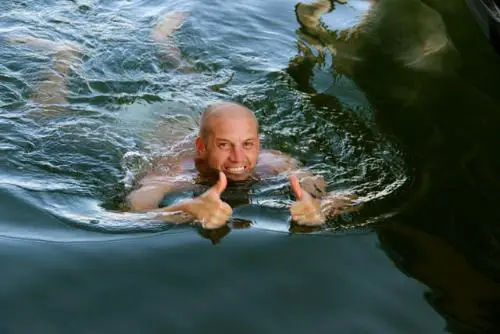

FAQ
As per the swimming rules set forth by FINA, children under the age of 14 are not recommended for open water swimming.
Not in the water! Use the bathroom before you embark on your journey. If you swim in a remote area, follow Leave No Trace principles, such as urinating 100+ feet from a water source.
See Notes on transportation in the Finances & Budget section.
See notes in the “Where and When to Go?” section.
No, although a swimming wetsuit offers buoyancy and helps you swim freely in water as the water is not absorbed and slips through the wetsuit. On the other hand, wearing any other clothes will absorb water, become heavy, and will eventually impede your swimming across the lake.
As long as you have the right swimming skills, and take precautions, you will return buzzing with excitement!
Yes, to avoid getting sunburns I recommend using zinc-oxide sunscreen.
Yes. The whole trip duration can exceed a day or two if you are far away from home

